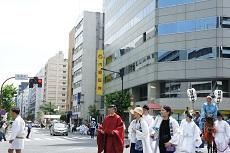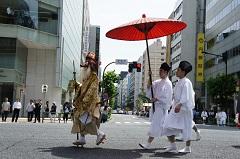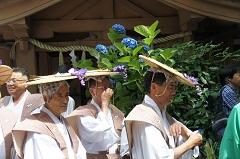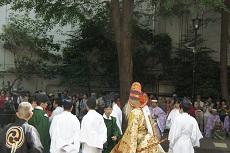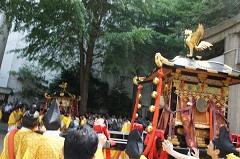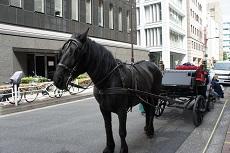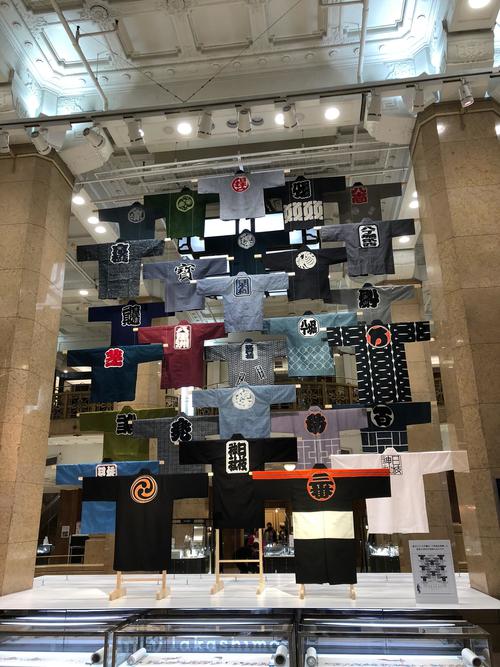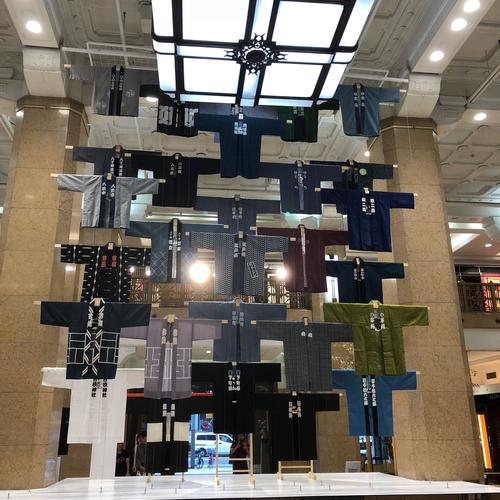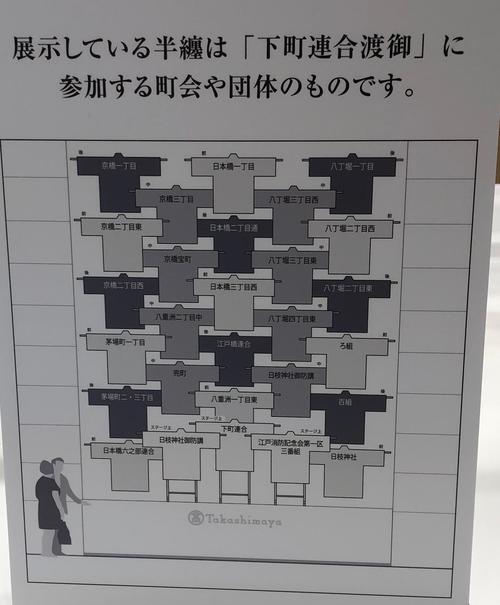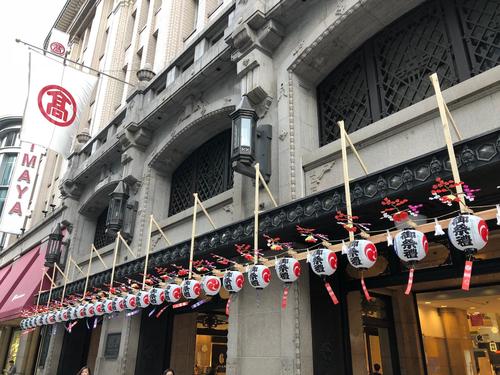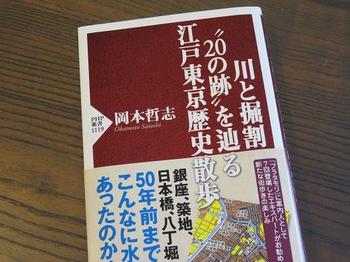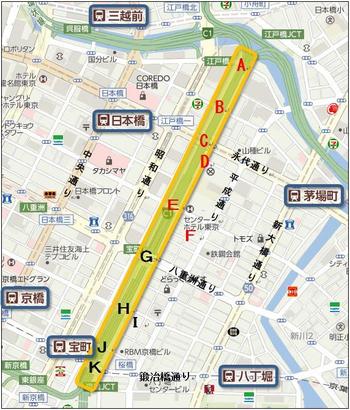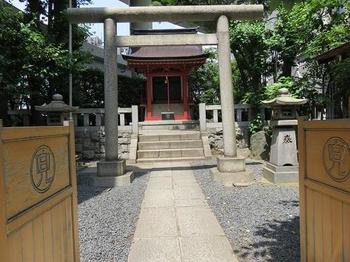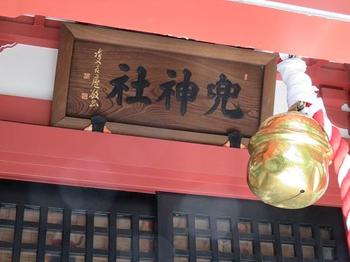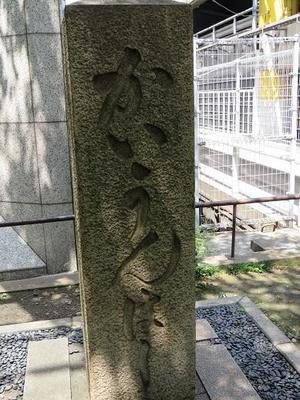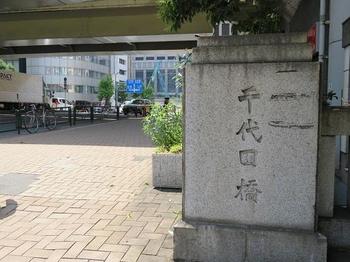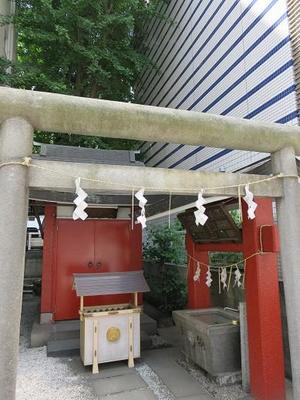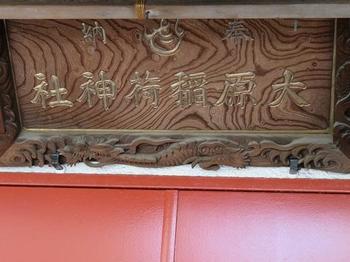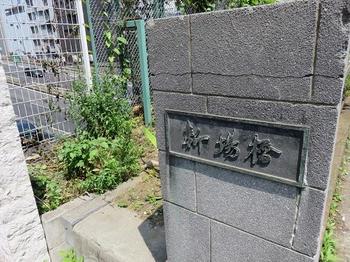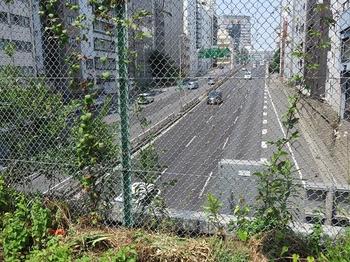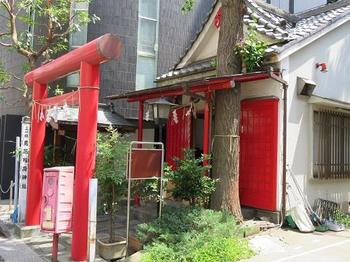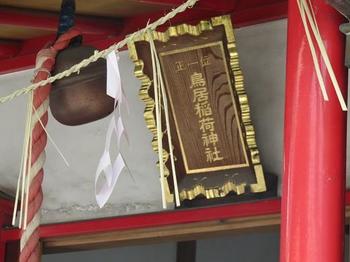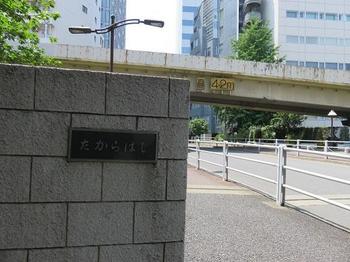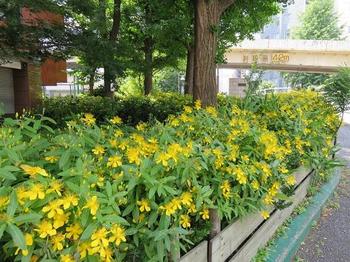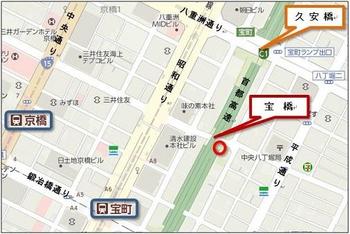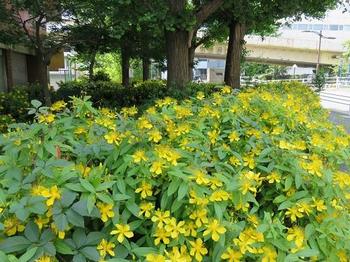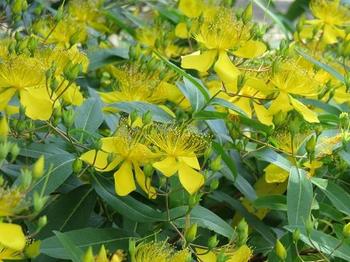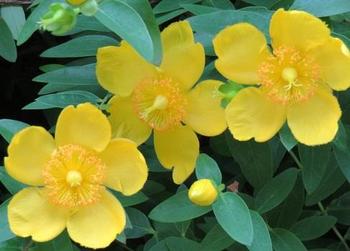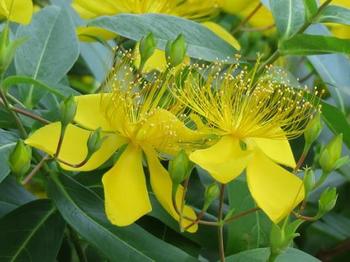This is a continuation of "Walking the Ruins of Kaedegawa (1)"
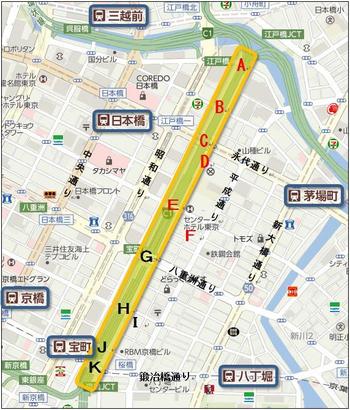
The Kaede River existed in Chuo-ku until the 1930s, diverted from the vicinity of Kabuto-cho on the Nihonbashi River to the south and reached the confluence of the Kyobashi River and Hatchobori (Sakuragawa). The Toshin Beltway, the Metropolitan Expressway, passes through the trace.


It is  the yellow part of the map above.
the yellow part of the map above.
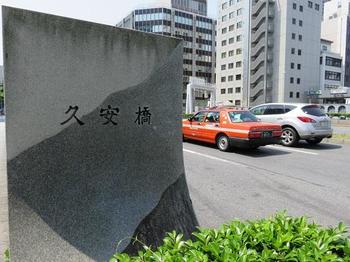
(G) It's Kuyasu Bridge.
This bridge is a bridge where Yaesu Street crosses the Metropolitan Expressway (formerly Kaedegawa).
The current bridge was rebuilt along with the construction of Yaesu Street by the reconstruction project of the Great Kanto Earthquake, and is a heavy arch bridge.
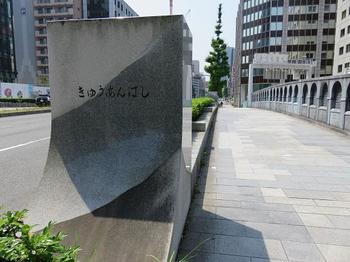
Kuyasu Bridge was built in front of the Kamiyashiki of Matsudaira-Etsunaka Mamoru in the Edo period and was called "Ecchu Bridge", but in 1868 the name "Ecchu", a remnant of Edo shogunate, was named "Kuyasu Bridge".

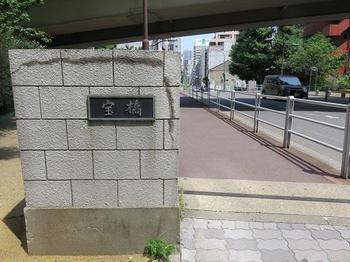
It's Takarabashi (H).
Takarabashi is a one-way narrow street connecting Kyobashi and Hatchobori, which crosses the Metropolitan Expressway (formerly Kaedegawa).
 The photo below shows the expressway south of Hohashigami.
The photo below shows the expressway south of Hohashigami.


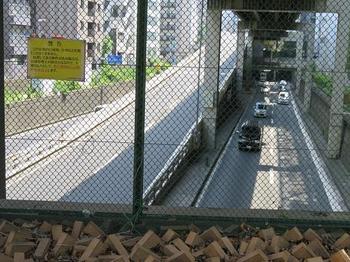
It seems that the name of Takarabashi comes from the town name "Takaramachi, Kyobashi-ku" on the Kaede Kawanishi side at that time.
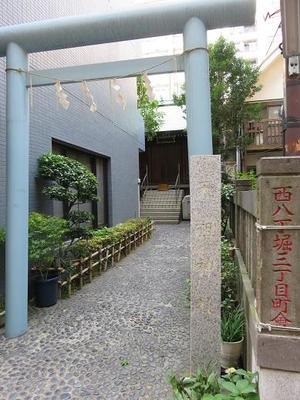
(I) At Tenso Shrine, a light blue torii gate , main hall is located right next to Takarabashi, along the narrow approach beside the building.
, main hall is located right next to Takarabashi, along the narrow approach beside the building.
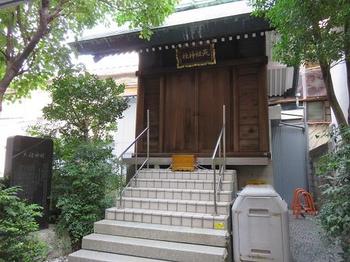
Although it is a small shrine, it has a history, and it begins in 1624 in the early Edo period when Ise Secretary-General Norimasa Ichinomasa served Izamiya, a separate shrine of Kotaijingu Shrine at Ise-jingu Shrine, at Edo Nihonbashi-dori 3-chome. It seems to be
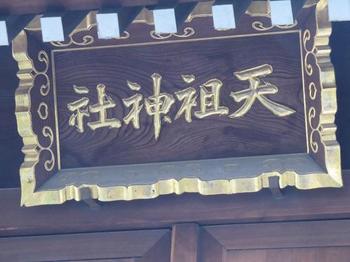
In 1633, it was said that Hatchobori Matsuyamachi was relocated by the order of the Shogunate with a replacement area of 300 tsubo and a gate area.

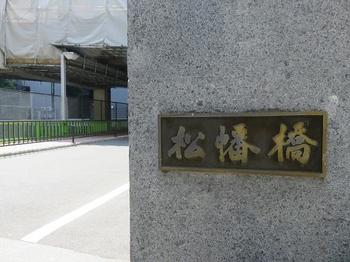
It's Matsuhatabashi (J).
It seems that it was named after taking one character of each town name from Matsuyamachi on the east side and Inabacho on the west side.
It was also called Matsuya Bridge in the Edo period.
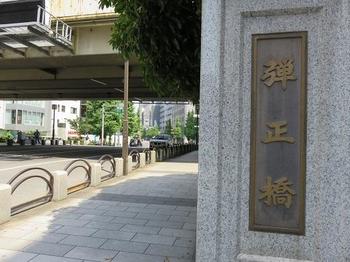
The bridge that spans the southernmost tip of Kaede River is Dansho Bridge (K)  and Kaji Bridge Street.
and Kaji Bridge Street.
Again, the current bridge was rebuilt by the Imperial Capital Reconstruction Project after the Great Kanto Earthquake.
In the early Edo period, there was a mansion of Tadatoshi Shimada Danjo on the east side, and it was called "Mitsuhashi" along with the Shiraoi Bridge on the Kyobashi River and the Shinpukuji Temple Bridge on the Sanjuma Horikawa.
In 1878, Japan's first () purely domestic iron bridge was built.
purely domestic iron bridge was built.
This iron bridge was relocated to Koto-ku in 1929 and was renamed Hachiman Bridge.

 The photo below shows the highway on the south side from Dansho Bridge.
The photo below shows the highway on the south side from Dansho Bridge.


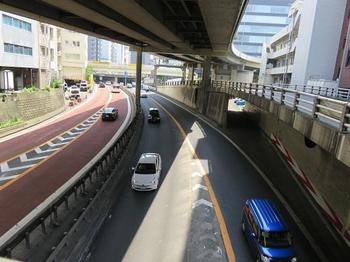
This time, when I walked along the Kaede River , it was a little short distance, but I was able to feel the weight of the history accumulated by "river and digging".
, it was a little short distance, but I was able to feel the weight of the history accumulated by "river and digging".
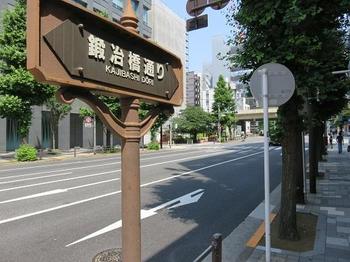
[Walking along the ruins of Kaedegawa] Complete






